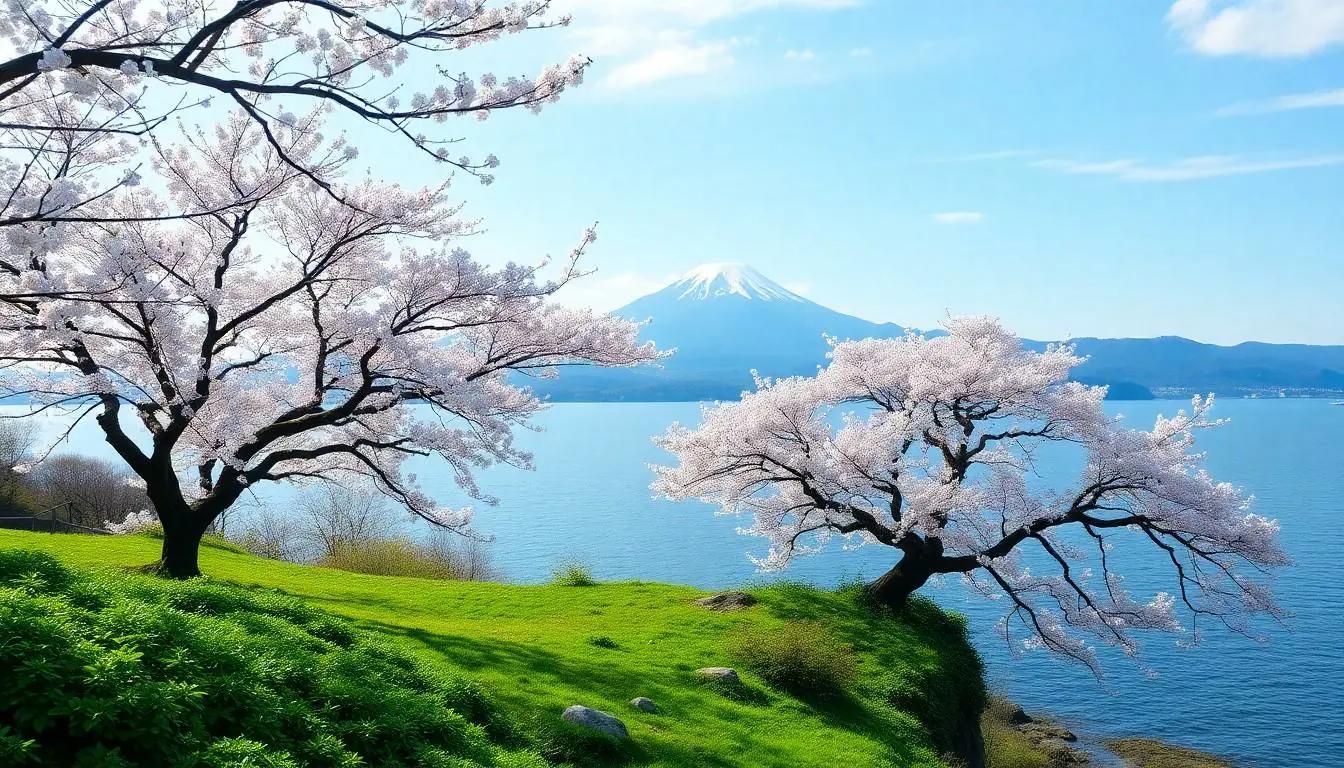In the breathtaking world of Ghost of Tsushima, players find themselves not just battling foes but also exploring the serene beauty of Tsushima Island. Amidst the chaos of war, hidden treasures await in the form of haiku locations. These serene spots invite players to pause, breathe, and channel their inner poet—because who wouldn’t want to compose a masterpiece while dodging arrows?
Imagine standing atop a cliff, the wind rustling through the grass, as inspiration strikes. These haiku locations aren’t just scenic; they’re a delightful escape from the pixelated pandemonium. As players seek out these tranquil spots, they’ll uncover the deeper essence of the game, blending adventure with artistic expression. So, grab your sword, and let’s embark on a journey to discover the most enchanting haiku locations that’ll make even the most stoic samurai feel a little poetic.
Table of Contents
ToggleOverview of Haiku Locations
Exploring haiku locations in “Ghost of Tsushima” reveals an intricate blend of nature and culture. Each haiku spot offers a sanctuary from the game’s more intense moments. Players encounter these locations throughout Tsushima Island, often while traversing breathtaking landscapes.
Four key areas house these haiku spots: the Bamboo Forest, the Coastal Cliffs, the Mountain Peaks, and the Tranquil Pond. The Bamboo Forest features serene pathways surrounded by tall green stalks, creating a peaceful atmosphere. Coastal Cliffs provide stunning ocean views, inspiring poetic reflections. Mountain Peaks present impressive heights, offering panoramic vistas ideal for contemplation. Lastly, the Tranquil Pond, with its still waters and gentle surroundings, invites players into moments of quiet introspection.
In total, there are 18 haiku locations to discover across the island. Each spot presents unique natural features, encouraging players to pause and craft poetry. Engaging with these locations enhances the overall experience, blending exploration with artistic expression. This balance between action and tranquility fosters a deeper appreciation of the game’s narrative.
Finding each haiku location requires players to explore the diverse terrains of Tsushima, from lush forests to rugged cliffs. The beauty of these spots contributes significantly to the game’s atmosphere, making the pursuit of haikus rewarding. Players connect with Jin’s journey and the island’s history through their interactions with the environment.
Significance of Haikus in Ghost of Tsushima
Haikus in “Ghost of Tsushima” play a vital role in enhancing the gaming experience. These poetic moments offer players a chance to pause, reflect, and appreciate the island’s beauty.
Cultural Context
Japanese culture highly values haiku poetry, showcasing deep appreciation for nature and emotions. Haikus encapsulate fleeting moments, which aligns with the game’s themes of honor, loss, and reflection. Players encounter these poems in serene settings, encouraging them to connect with the landscape. The landscape mirrors traditional Japanese aesthetics, emphasizing harmony between humanity and nature. In this way, haikus serve not only as artistic expressions but also as cultural touchstones that deepen the player’s engagement with Tsushima’s history.
In-Game Mechanics
The integration of haikus into gameplay enhances player interaction with the environment. Players discover haiku spots scattered across the island, each inviting them to pause and compose a verse. While exploring, they are encouraged to reflect on Jin’s journey and the broader narrative. Through a simple interface, players select lines that resonate with their experiences, creating a unique poetic moment. Completing a haiku grants players characters, fostering deeper emotional investment in the game. This mechanic allows players to craft their poetic voice while enjoying the breathtaking visuals of Tsushima.
Detailed Guide to Haiku Locations
Discover unique haiku locations across Tsushima, each offering a peaceful escape. Players can immerse themselves in natural beauty while composing verses that resonate with their journey.
The Bamboo Forest
The Bamboo Forest features tall, swaying stalks that create a calming atmosphere. Mist often hangs low, giving the area an ethereal quality. The gentle rustling of leaves adds to the ambiance, inviting players to pause and reflect. A haiku spot nestled within this dense grove allows for introspection. Players find themselves inspired by the surroundings, enhancing their poetic expressions in a serene environment.
The Cliffside Viewpoint
The Cliffside Viewpoint provides breathtaking panoramic vistas of the ocean below. This dramatic setting offers a stark contrast to Tsushima’s tranquil landscapes. Players can gaze at the waves crashing against the rocks, feeling a connection to nature’s power. A haiku spot perched atop this cliff encourages creative contemplation, capturing the meeting of water and sky. The expansive views evoke emotions that translate beautifully into poetry.
The Serene Waterfall
The Serene Waterfall captivates with its cascading waters and lush greenery. Here, players hear the soothing sound of flowing water blending with chirping birds. A haiku spot positioned nearby allows for moments of quiet reflection. This natural oasis serves as a source of inspiration, encouraging players to craft verses that resonate with the surrounding beauty. The serene environment enriches the experience, infusing the poetic journey with tranquility.
Tips for Finding Haiku Locations
Finding haiku locations in “Ghost of Tsushima” enhances the gaming experience by providing moments of reflection and creativity. Players can immerse themselves in the tranquil beauty scattered across the island.
Exploring the Map
Exploration plays a crucial role in detecting haiku spots. Multiple locations emerge on the map as players venture into different regions. Utilizing the map’s color-coded sections helps prioritize exploration. Players should focus on zones like the Bamboo Forest, Coastal Cliffs, and Mountain Peaks to discover hidden poetry spots. Keeping an eye on the in-game icons allows players to identify areas of interest. Engaging with the environment leads to unforgettable insights, making map exploration rewarding.
Using Environmental Cues
Environmental cues significantly aid the search for haiku locations. Players should observe unique features such as swaying bamboo or rustling leaves signaling proximity to a haiku spot. Listening for gentle water sounds can indicate nearby tranquil ponds. Additionally, seasonal changes alter landscapes and present new visual cues. Noticing how sunlight filters through trees enhances the beauty of potential poetry sites. Paying attention to these subtle indicators enriches the overall journey as players compose their verses.
Conclusion
Exploring the haiku locations in “Ghost of Tsushima” offers players a unique opportunity to blend action with tranquility. Each serene spot invites moments of reflection that enhance the overall gaming experience. By discovering these poetic locations, players not only connect with Jin’s journey but also engage with the rich cultural backdrop of Japan.
The beauty of Tsushima Island serves as a canvas for creativity and introspection. As players traverse its diverse landscapes, they can appreciate the delicate balance between nature and emotion. This journey through haiku spots encourages a deeper appreciation for the game’s narrative and artistry. Whether a seasoned warrior or a budding poet, the experience of crafting haikus in this breathtaking world is one that resonates long after the game is over.




